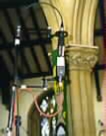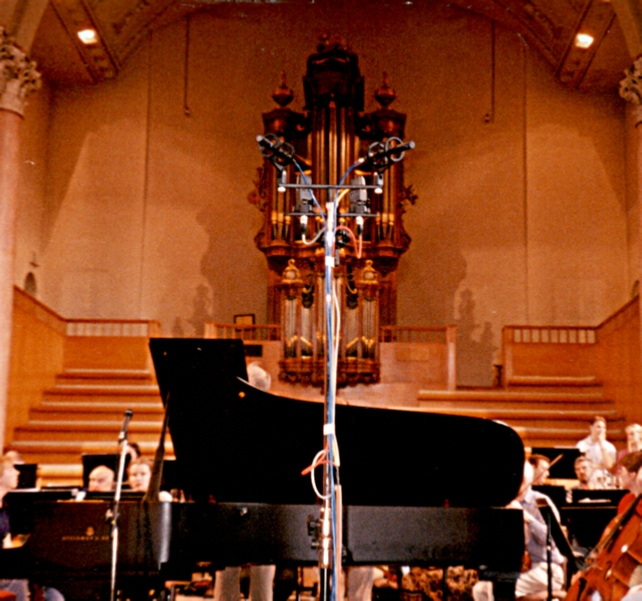Innocent Ear
What are the pros and cons of the two methods
Whilst nothing invented by man is perfect, natural microphone techniques have the beauty of simplicity that comes from the cleverest of inventions. Their major advantage is that they closely mimic the way in which we hear. After all, we only have two ears and yet we have no problem hearing music live, even with our eyes closed. Other microphones are not only not needed, they often make the sound worse! This is definitely a case of 'less is more'. We feel that the problems lie more in the restrictions inherent in stereophonic reproduction, where all the sound, direct and reflected comes from in front of the listener, whereas in real life sounds arrive at the listener's ears from all directions. This is a fundamental problem of reproducing sound at home through just two loudspeakers, a limitation partially removed by 5.1 surround sound recordings which can, with a good microphone technique, re- You can hear when an orchestra plays live that the woodwind section is behind the strings and the percussion section is often behind them. You can't hear this on the vast majority of modern recordings, it's as if the engineers think that we're all deaf and need assistance to hear what they obviously think of as 'weaker' instruments. Another problem is the lack of trained and experienced engineers in natural techniques. It takes as many years of experience to know how to use these techniques properly, just as it does to use multi-
You can hear when an orchestra plays live that the woodwind section is behind the strings and the percussion section is often behind them. You can't hear this on the vast majority of modern recordings, it's as if the engineers think that we're all deaf and need assistance to hear what they obviously think of as 'weaker' instruments. Another problem is the lack of trained and experienced engineers in natural techniques. It takes as many years of experience to know how to use these techniques properly, just as it does to use multi-
The use of multiple microphones however, is strewn with problems, some serious. The problem of taking away the balance from the musicians has already been mentioned. This is more serious than it may appear, as musician's balance is a subtle and constantly changing thing, particularly in chamber music where the players have to listen to each other all the time and adjust their own playing accordingly. For an engineering team to even think that they can fake this sort of subtlety is ridiculous. Musicians have been balancing themselves for centuries before the advent of electronic 'assistance'. They do it much better than any engineer.
The use of multiple microphones to cover either groups of instruments or individual instruments is fraught with problems. Firstly, you have the problem of overspill. If you are trying to mike up say the woodwind, you will get overspill from the brass and percussion behind. So if the engineer wants to highlight the woodwind, he will also bring up the brass and percussion to a lesser degree. This may well be musically undesirable. So the engineer has to place the microphones very close to the instruments he wants to control to avoid overspill. This has two problems of its own. Firstly, acoustic musical instruments are not designed to be heard at such a close range. They sound harsh and horrible because at very close range you only hear a segment of the total acoustic radiation of the instrument and that distorts the timbre of that instrument. Secondly, since the sound of the instrument is received at different times at several microphones, microphone signals add at some frequencies and subtract at others: an unpleasant and audible phenomenon known as comb filtering. Thirdly, each microphone will also pick up hall reverberation from a different perspective.
Unlike single point microphone techniques that give real, solid stereo, multiple microphone techniques actually give multi-
Since the natural ambience of the hall is suppressed when multiple close microphones are used, it has to be 'restored' by artificial means. The way this is most often done is to overlay the acoustic of another venue on top of your own recording, or you can pass your recording through an echo plate. Both obviously conflict with reality, because in live sound, each instrument excites different nodes in the building, depending on its directivity and its position in the building. This is one of the distance cues our brains use to assimilate a perspective. Take it away, and the perspective is lost.
